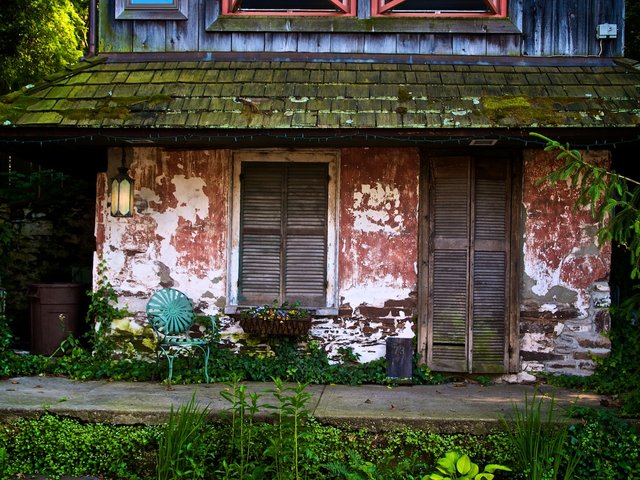Have you ever heard of Wabi-Sabi? You should try it!

You may think I am referring to some kind of sushi recipe, but you would very wrong. Wabi Sabi is a Japanese philosophical and aesthetic paradigm linked to Buddhism that extols the wisdom and beauty that lies in imperfection.
It is difficult to translate the term, since it comes from two Japanese words whose meaning has been evolving, but we could say that wabi refers to the rustic simplicity, freshness and peculiarities of both what we find in nature and what man produces, and Sabi, to the beauty and serenity evidenced by the patina of time.
What is Wabi Sabi?
It is a characteristic feature of Japanese aesthetic beauty that describes objects or environments characterized by simplicity, impermanence and the observation of the passage of time through matter. It is the hidden beauty that is seen in the imperfect and unfinished. It is an aesthetic paradigm and also philosophical, since it gives a spiritual dimension to the art of living. Luis Fernando Mises with Kelly Diamond on Wabi-Sabi
Can we apply the aesthetic wabi sabi in our homes?
Of course, it is not necessary to live in an austere wooden cabin to experience it. A modern piece of furniture can have wabi sabi features in its organic form, texture, simplicity or craftsmanship. There are works of modern art whose contemplation evokes silence, emptiness, stillness, recollection or that are a game of imperfect and unfinished textures, like those of the Italian architect and designer Gaetano Pesce, Rothko, Lucio Fontana, Anish Kapoor, Hiristo Sigimoto or Antoni Tàpies.
It is worth trying to apply the wabi sabi in our house because it involves a change in the value we give to the objects that surround us.
Wabi Sabi preaches the beauty of imperfection. How do you understand this concept?
The life of an object and its impermanence are evident in its patina and wear. Wabi wabi reveres the imperfection of materials that are vulnerable to the effects of time. Life has passed through them and beauty expresses itself. The Japanese Kintsukuroi technique, for example, repaired broken objects by filling their cracks with silver and gold: defects and imperfections are celebrated because they show the beauty of fragility.
Which color palette fits best in Wabi Sabi?
Non-strident colors that emerge from nature. Brown, beige, white, gray, green, blue ... Actually any tone or color that emerges after time, use and wear.
What are the preferred materials?
Wood, stone and natural fibers such as cotton and linen.
What role does the craft have in the Wabi Sabi look?
A primordial role, since it arises from a subjective, individual and never mechanical vision.
What to consider when including Wabi Sabi in your house.
The search for simplicity and the elimination of everything superfluous and ornate, as well as the use of natural elements. A space must be composed of furniture and objects distributed in a natural order and all of them must constitute a story in themselves thanks to its unique patina, texture and shape.
How can this aesthetic change itself?
Embracing the Wabi Sabi aesthetic implies a transformation of our person, and consequently, of our environment. It implies an approach to the essential nature of things, a change in the appreciation of beauty, assumed in imperfect and ephemeral simplicity. All to approach a way of being and thinking that generates well-being.
Did you know of Wabi Sabi? Have you tried it? Please let me know about your experiences in the comments below.
Also on our website: https://emancipatedhuman.com/wabi-sabi/
nice post
Good information..
I didn't understand it much what wabi-sabi is, but I will definitely read about it more as I am very much interested in the paradigm shift and things like these.
Maybe this can give me some new philosophy.
i find it to be a very powerful ideology
I knew about Wabi Sabi, but appreciate the reminder.
I've found it's sentiment that can be practiced in day to day life, learning to appreciate the qualities of; cracked walls, asymmetry, things in transitional states, decaying sentimental items, etc.
I've always had Wabi Sabi when it comes to physical attraction, though...
The 'perfect face' is attractive to me, but only for a short space of time. I get 'bored'. I actually like faces that I'm unsure if I like initially, because it keeps me interested (though I don't think I would share that with a potential partner). Protruding noses are one of things I love on a feminine face.
I have been exploring wabi-sabi for some time now. as well as shifting my personal way of being to one that appreciates the beauty in imperfection and realizes nothing last forever, I am attempting to create photographs that embrace wabi-sabi.